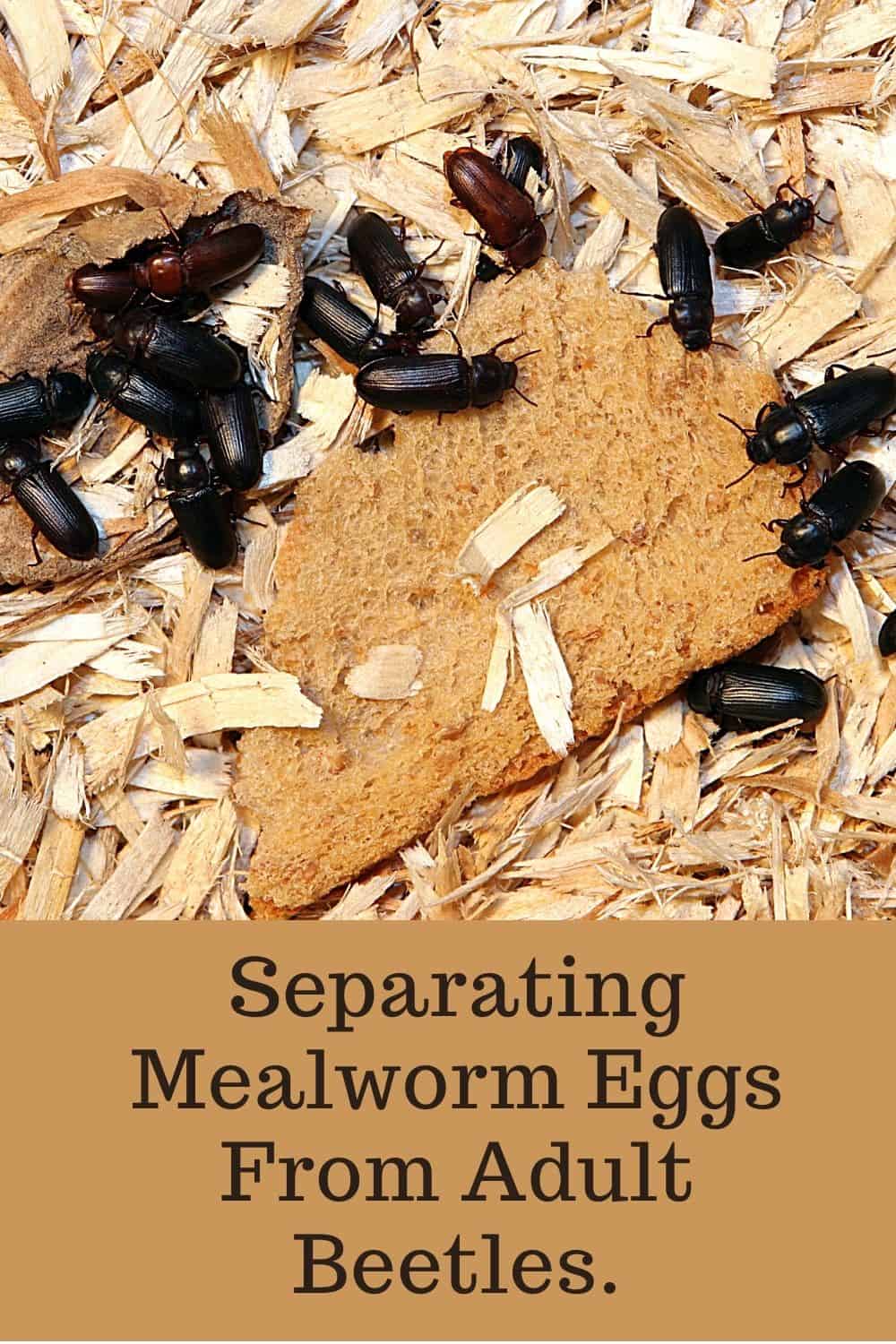
Jeffery Jago is a expert in horticulture and worm breeding. With a background in plant cultivation
Last Updated on March 28, 2023 by Jeffery Jago
When mealworm beetles lay eggs, they will often cover them with the material you’ve used as bedding. This makes it difficult to identify the eggs from the adult beetles until you start looking closely. It’s very important to separate the eggs from the adults and place them in their own hatchery.
This has several benefits, including keeping things well sorted and a nice supply cycle all neatly timed out. It also keeps the various sizes of mealworms from eating each other.
For this you will require:
- A couple of buckets or containers
- Your box of adult beetles filled with eggs
- A 1/8th steel mesh sieve
Start by taking your bin with adults and eggs, and dump them through the 1/8th sieve. You will be left with a pile of beetle eggs and substrate on one side, and the adults on the other.
Take the eggs and substrate and place them into the hatchery container for further processing. As for the adult beetles, Replace them in the initial egg-laying container and add more substrate for them to continue laying eggs.
There shouldn’t be much frass to deal with between these 2 bins as they don’t eat much during these times. Especially if you’re doing this 1-2x a week.
Adult female beetles will lay up to 500 eggs at a time, So each sieving will reveal thousands of eggs and soon-to-be mealworms, assuming how many beetles you have.
As you can see, it’s very simple to separate mealworm beetle eggs from adults, and you’ll have more than enough of them for your next-generation mealworms.
You may notice tiny white eggs that seem to be stuck to the bottom of the container. This is a good sign and means you should continue to add new substrate to the laying container because the battles are continuing to lay.
Once you notice the little white egg patches are starting to thin out or disappear during future savings, It means the adults have begun to stop laying eggs and may need to be swapped out for new ones.
To clarify, you do not need to scrape the eggs off the bottom. They are not glued to the substrate or bottom and will come out in the next cycle of sieving.
How often will darkling beetles lay eggs?
Darkling beetles will continue to lay eggs until they are removed from the container.
How long do darkling beetle adults live?
Darkling beetles as adults will survive for a couple of months. If you account for their entire lifetime from egg to adult, it’s about 1 year.
Where do darkling beetles lay their eggs?
Darkling beetles will dig themselves down into the substrate to deposit the eggs. You may occasionally see eggs on the surface, sometimes dragged up by other layers, or just a careless beetle laying on the surface. It could be a sign of other issues.
Do darkling beetles fly?
Can darkling beetles fly? No! Darkling beetles are ground-dwelling insects and do not have the ability to fly. Their wings are fused together, which gives them a protective coating against predators.
When they feel threatened, darkling beetles will often play dead in order to avoid being eaten. In addition to their lack of flying ability, darkling beetles also have poor eyesight.
However, they make up for this deficit with their acute sense of smell. Darkling beetles are attracted to anything that smells sweet or fatty, which is why they are often found near garbage cans or in kitchens. While they may be considered pests, darkling beetles serve an important purpose in the environment.
How Many Legs Does a Mealworm Have?
A mealworm, which is the larval stage of the darkling beetle, has six legs. These six legs are located near the head of the mealworm, as it is an insect and all insects have six legs.

